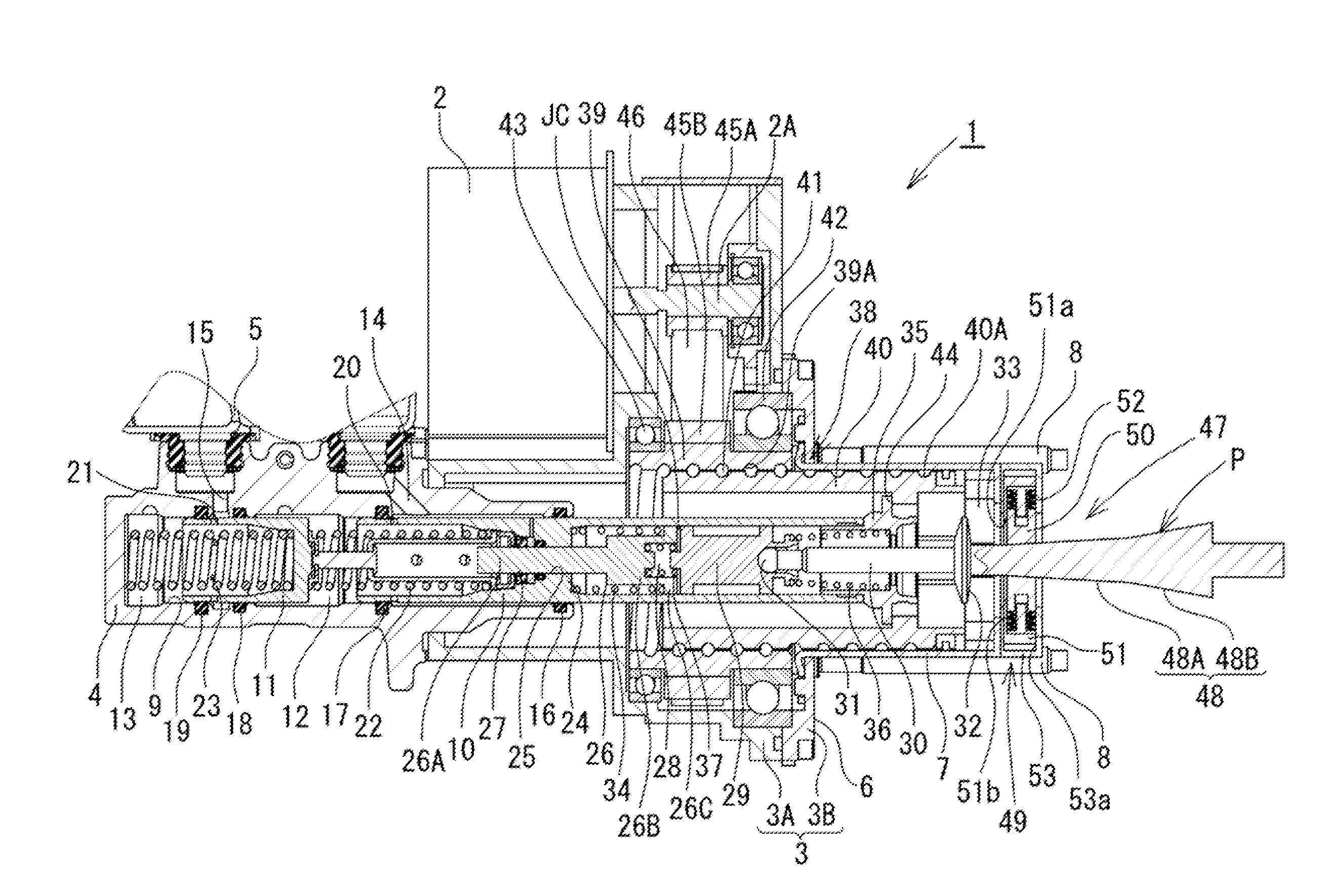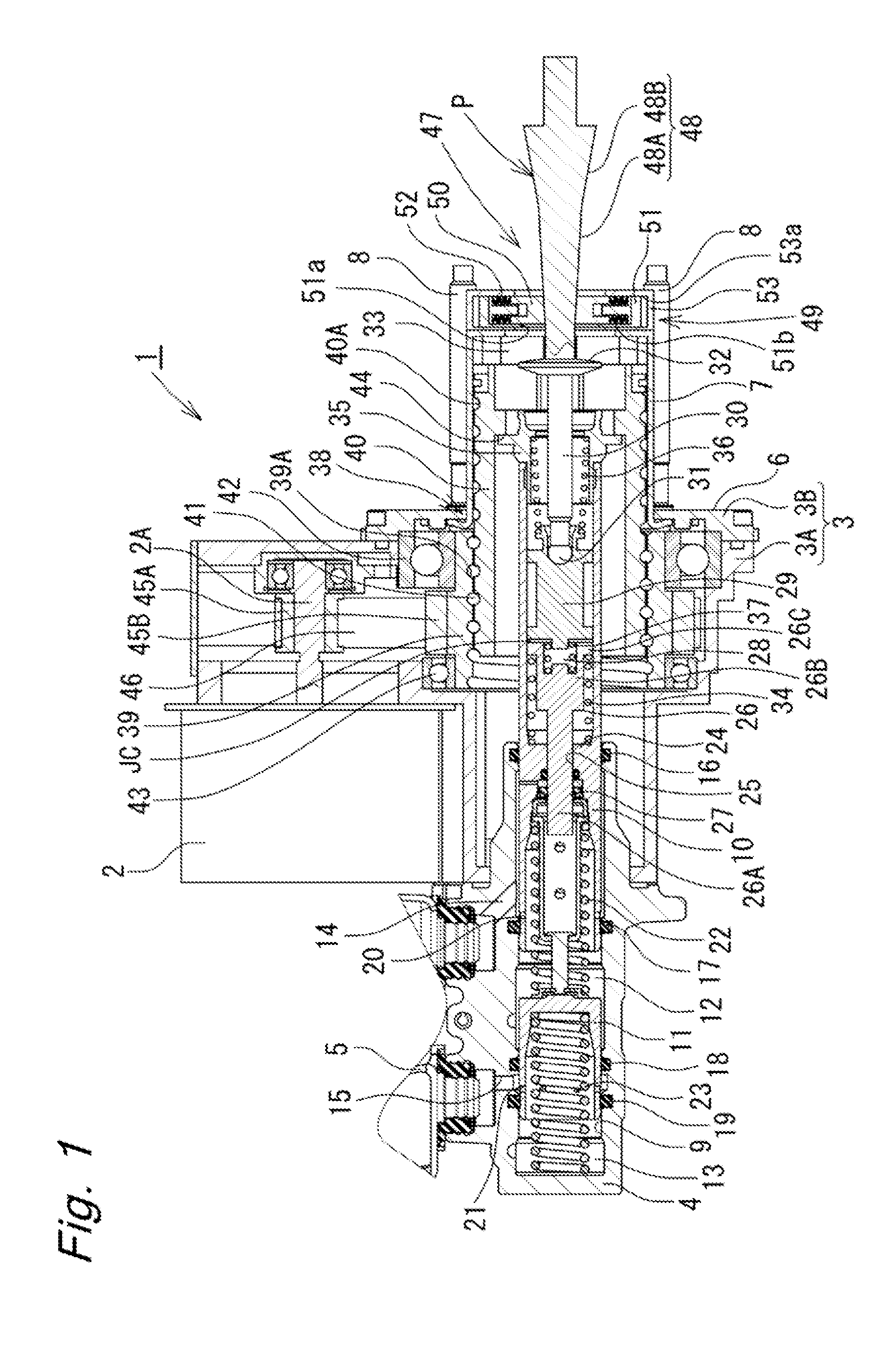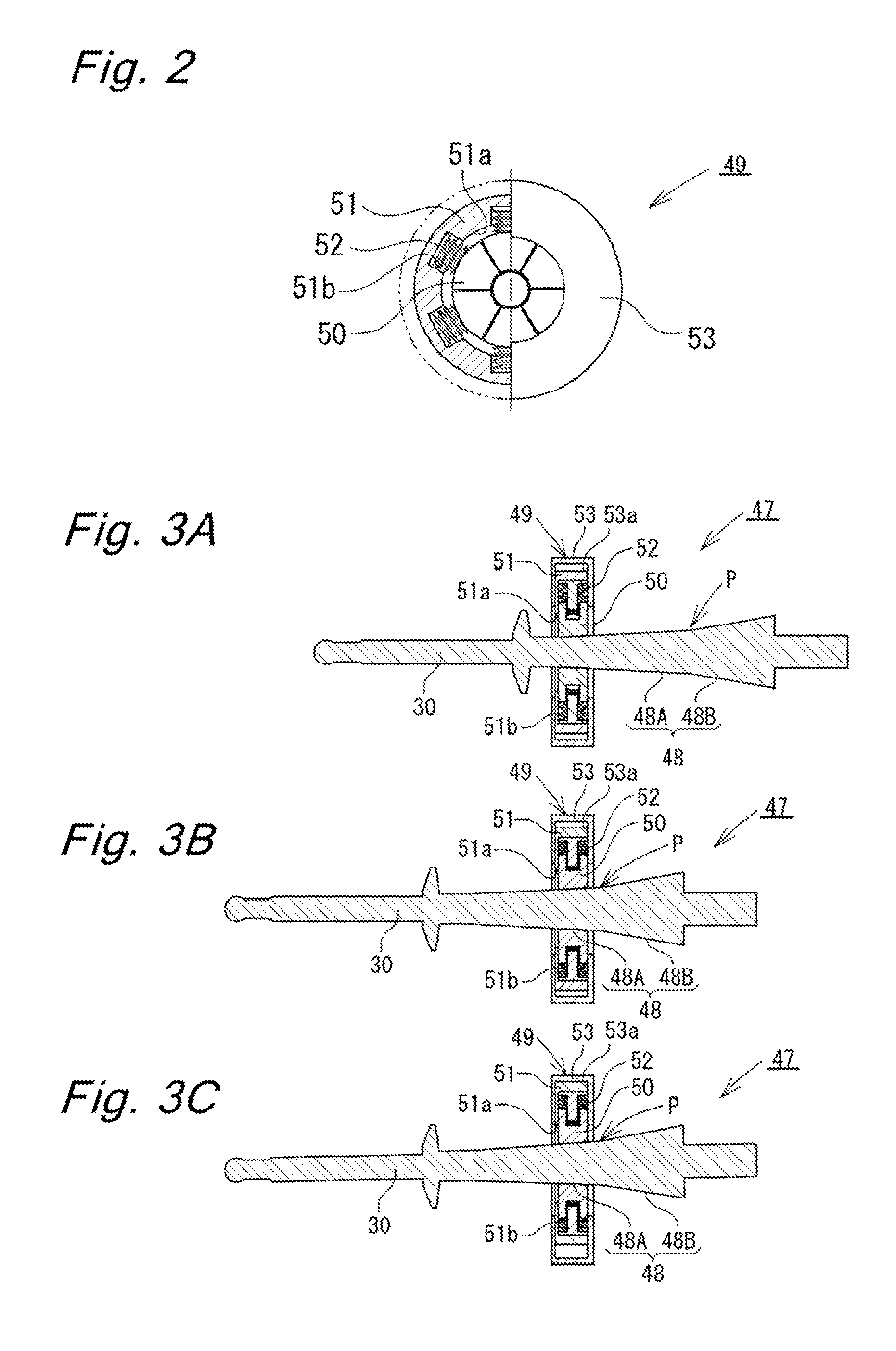Booster, resistance force applying apparatus, and stroke simulator
- Summary
- Abstract
- Description
- Claims
- Application Information
AI Technical Summary
Benefits of technology
Problems solved by technology
Method used
Image
Examples
first embodiment
[0019]In the following description, embodiments of the present invention will be described in detail with reference to the drawings. An electric booster according to the present invention will be described with reference to FIGS. 1 to 4.
[0020]As illustrated in FIG. 1, the electric booster 1 according to the present embodiment is a booster that operates with use of an electric motor 2, which is an electric actuator, as a driving source thereof. The electric booster 1 has a structure including a housing 3 and a tandem-type master cylinder 4 coupled to one axial side (a front side, a left side in FIG. 1) of the housing 3. A reservoir 5 (only a part thereof illustrated), which supplies brake fluid to the master cylinder 4, is mounted on a top of the master cylinder 4. The housing 3 is formed by coupling a rear cover 3B to an opposite end side of a generally cylindrical stepped front housing 3A.
[0021]A fiat mounting seat surface 6 is formed at the rear cover 3B of the housing 3. A cylind...
second embodiment
[0063]Next, the present invention will be described with reference to FIGS. 7 and 8. The present embodiment is an embodiment in which the present invention is applied to a stroke simulator that exerts a reaction force to a brake pedal while being mounted in a so-called brake-by-wire system that generates a braking force in response to an electric signal based on a stroke of the brake pedal without the brake pedal and a frictional brake directly mechanically connected to each other via a hydraulic circuit and the like.
[0064]As illustrated in FIG. 7, a stroke simulator 70 according to the present embodiment includes a generally bottomed cylindrical housing 71, a slider 72 that is axially movably guided, in the housing 71, an input rod 73 connecting the slider 72 and a brake pedal (not illustrated) to each other and serving as an input member inserted in the housing 71, and a reaction force spring 74 that is a compression coil spring disposed between a bottom of the housing 71 and the ...
third embodiment
[0072]Next, the present embodiment will be described with reference to FIGS. 9 and 10. The present embodiment is a resistance force applying mechanism that is mounted at a shaft supporting a brake pedal, and applies a resistance force against a stroke of the brake pedal.
[0073]As illustrated in FIG. 9, a resistance force applying mechanism 83 is mounted at a rotational shaft 82 of a brake pedal 81 rotatably supported by a brake bracket 80. An input rod 84, which transmits a force of operating the brake pedal 81 to a brake system (not illustrated), is coupled to the brake pedal 81.
[0074]As illustrated in FIG. 10A, the resistance force applying mechanism includes a generally bottomed cylindrical housing 85 fixed to the brake pedal bracket 80, a rotational cam member 86 that is a rotational member disposed in the housing 85, a linearly moving cam member 87 that is a sliding member opposite from the rotational cam member 86, and a spring member 88 that is a compression coil spring dispos...
PUM
 Login to View More
Login to View More Abstract
Description
Claims
Application Information
 Login to View More
Login to View More - R&D
- Intellectual Property
- Life Sciences
- Materials
- Tech Scout
- Unparalleled Data Quality
- Higher Quality Content
- 60% Fewer Hallucinations
Browse by: Latest US Patents, China's latest patents, Technical Efficacy Thesaurus, Application Domain, Technology Topic, Popular Technical Reports.
© 2025 PatSnap. All rights reserved.Legal|Privacy policy|Modern Slavery Act Transparency Statement|Sitemap|About US| Contact US: help@patsnap.com



